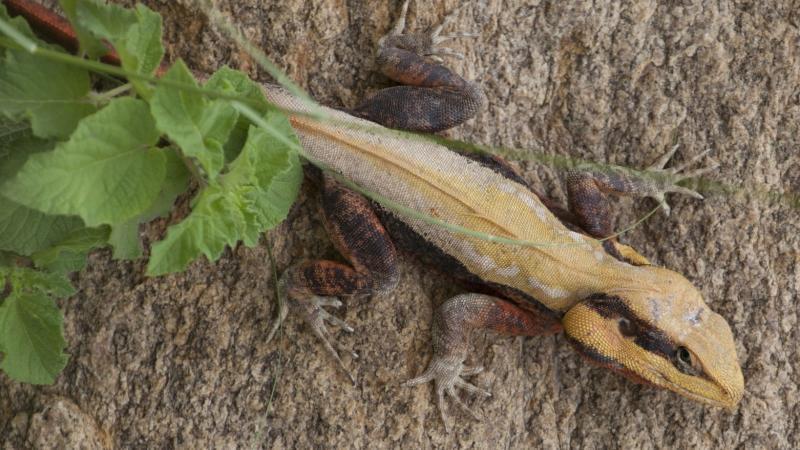
IISc Study Finds Hungry Rock Agamas Take Bigger Risks for Food
In the wild, survival often depends on making calculated risks to ensure sustenance. A recent study by researchers at the Indian Institute of Science (IISc) has shed light on the fascinating world of rock agamas, a species of lizards, and their remarkable ability to assess risks in pursuit of food. The study found that the availability of food plays a significant role in shaping the risk-taking behavior of these reptiles. Hungry rock agamas are more likely to take bigger risks to secure larger, albeit uncertain, meals, while well-fed ones opt for smaller, guaranteed ones. This remarkable ability to weigh risks and rewards is a testament to the lizards’ intelligence and adaptability, allowing them to thrive in the face of environmental challenges.
Rock agamas, also known as Agama agama, are a common sight in the rocky outcrops and scrublands of southern India. These lizards are opportunistic feeders, preying on a wide range of insects, fruits, and vegetation. In the wild, they face numerous challenges, including competition for resources, predation, and harsh environmental conditions. To overcome these challenges, rock agamas have evolved a range of strategies, including their remarkable ability to assess risks and make informed decisions about food foraging.
The IISc study, published in the journal Behavioral Ecology and Sociobiology, aimed to investigate the impact of food availability on the risk-taking behavior of rock agamas. The researchers, led by Dr. Shashank Dalvi, a postdoctoral fellow at IISc, designed an experiment to examine how hungry and well-fed lizards responded to different food scenarios.
In the experiment, the researchers used a maze-like setup with two exits, one leading to a guaranteed but smaller meal and the other leading to a larger, but uncertain, meal. The lizards were initially starved for 24 hours to simulate hunger, and then released into the maze. The researchers observed their behavior and recorded the time taken to reach each exit.
The results were striking. Hungry rock agamas took significantly longer to reach the guaranteed meal exit, instead opting for the exit leading to the larger, uncertain meal. In contrast, well-fed lizards quickly reached the guaranteed meal exit, indicating a preference for smaller, more reliable meals.
These findings suggest that rock agamas are capable of assessing risks and making informed decisions about food foraging, based on their energy reserves. When hungry, they are willing to take bigger risks to secure larger meals, even if there is a chance of failure. Conversely, when well-fed, they prioritize smaller, guaranteed meals to conserve energy and minimize the risk of wasting food.
This behavior is reminiscent of the decision-making processes observed in humans, where people often weigh the potential rewards against the risks when making choices. The IISc study highlights the remarkable parallels between the decision-making abilities of rock agamas and humans, underscoring the importance of considering the context in which animals make decisions.
The findings of the study have significant implications for our understanding of animal behavior and ecology. By recognizing the ability of animals like rock agamas to assess risks and make informed decisions, we can better appreciate the complexity of their decision-making processes. This, in turn, can inform conservation efforts and help us develop more effective strategies for managing wildlife populations.
In conclusion, the IISc study on rock agamas has shed new light on the fascinating world of reptile behavior. The findings demonstrate the remarkable ability of these lizards to assess risks and make informed decisions about food foraging, based on their energy reserves. This ability to weigh risks and rewards is a testament to the intelligence and adaptability of rock agamas, allowing them to thrive in the face of environmental challenges. As we continue to explore the natural world, we are reminded of the importance of considering the complex decision-making processes of animals, and the potential insights they can provide into the workings of the natural world.
Source: https://researchmatters.in/news/reptile-hunger-games-how-lizards-gamble-food






